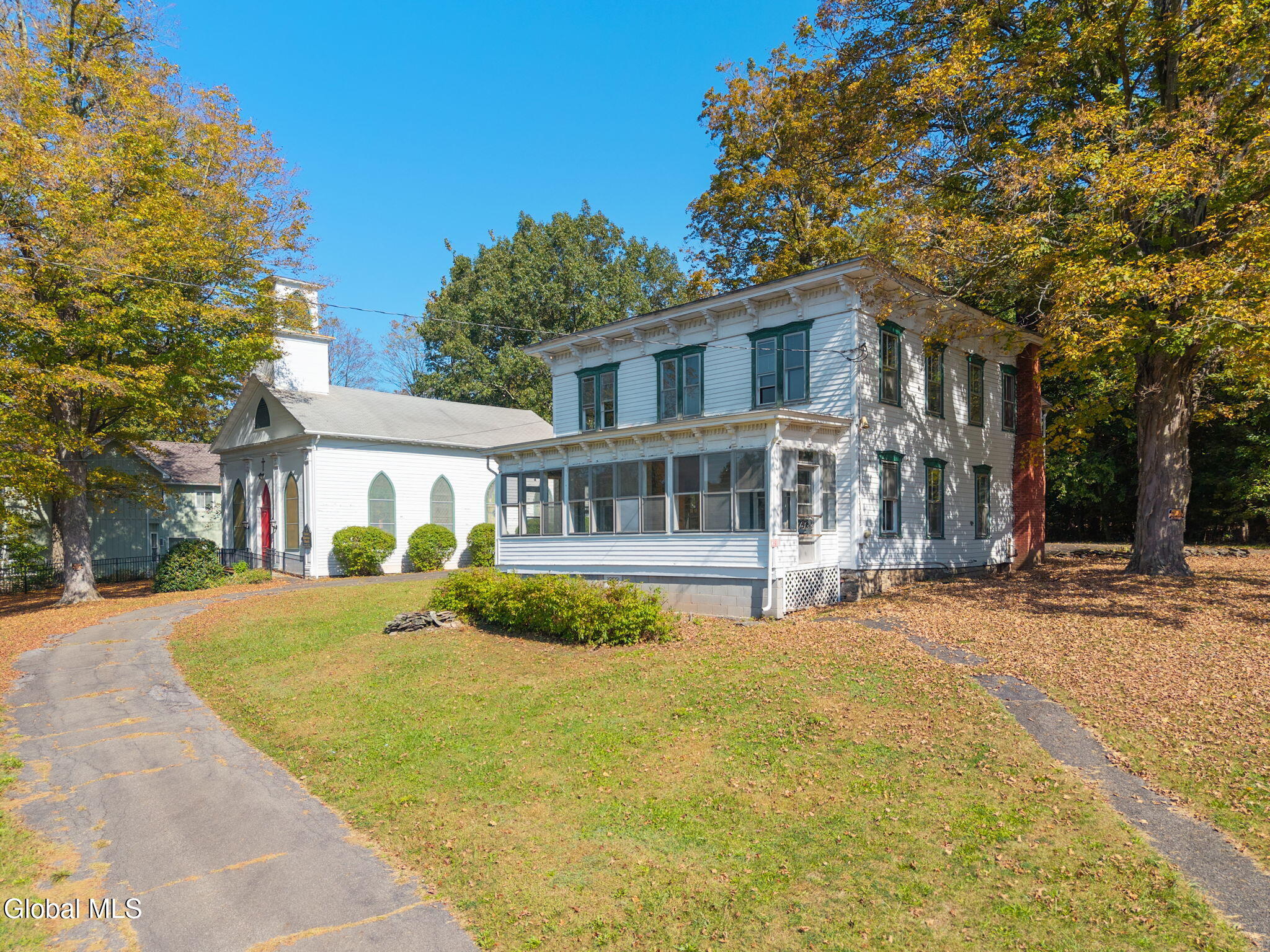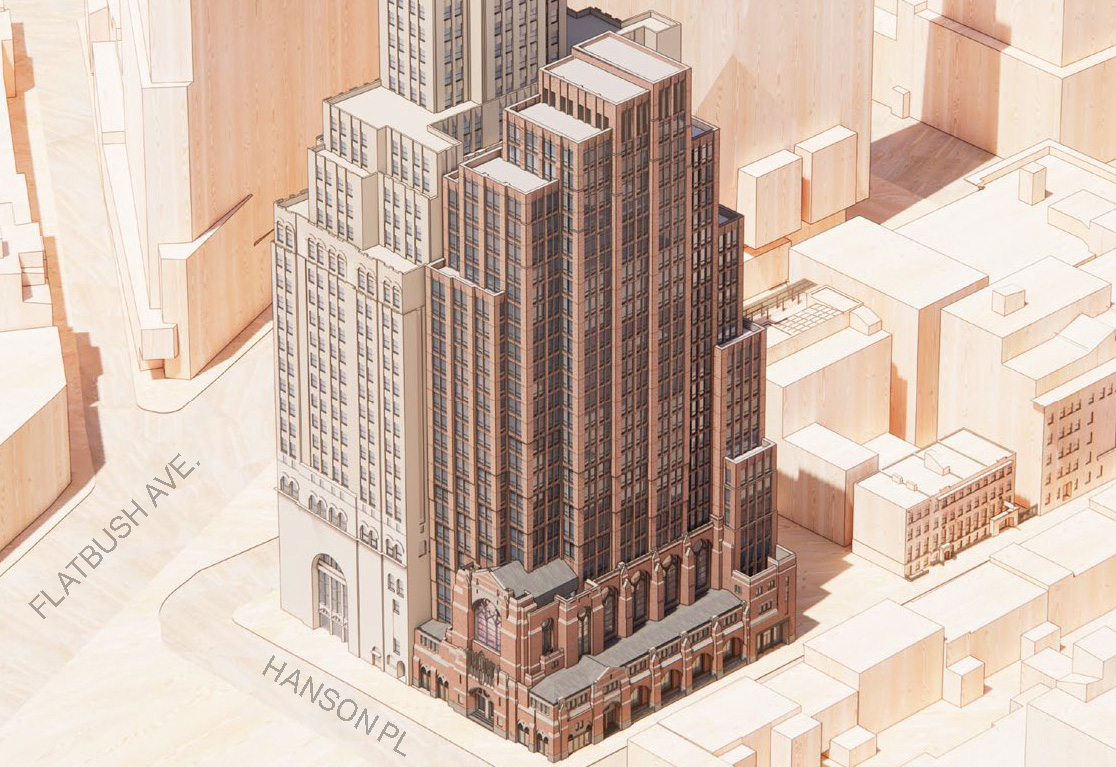Admiral's Row: The Projected Costs of Preservation
Another little birdie emailed us with some of the costs that the consultants hired by the Feds are projecting for restoring the Admiral’s Row houses. As you can see from the chart, there were some later additions to the original 19th Century houses that are generally in worse condition and not considered worth saving, hence…



Another little birdie emailed us with some of the costs that the consultants hired by the Feds are projecting for restoring the Admiral’s Row houses. As you can see from the chart, there were some later additions to the original 19th Century houses that are generally in worse condition and not considered worth saving, hence the two square footage numbers. The Rehabilitation numbers refer to restoring what’s currently there, bringing existing details back to life and replicating missing portions; The Reconstruction numbers refer to a scenario in which remaining details are salvaged and incorporated into newly-constructed replicas. In addition to being cheaper, the Rehab approach sounds preferable to us. How do these numbers look to you?
Admiral’s Row: “Extremely High Level of Historic Integrity” [Brownstoner]
Officers’ Row: Let’s Have Our Cake and Eat It Too [Brownstoner]
Officers’ Row Preservation Coming to a Contentious Head [Brownstoner]
For Officer’s Row, Supermarket All But Certain [Brownstoner]
Admiral’s Row Fixup to Cost $20M [NY Daily News]
Real Estate Round-Up [Brooklyn Eagle]





the houses ARE part of the context -and are you ignorant of the beautiful Commodore’s Mansion just around the corner?
What a waste it will be.
12:14 you don’t know anything about real estate.
1. The context of these buildings is they are adjacent to the BQE, housing projects, and one of the largest industrial districts in Brooklyn.
2. You have zero market data to support that assumption. Rents in the area are probably $15.00 to $20.00 per square foot tops. You’re looking more at $750,000 net to $1,000,000 in net operating income per year. Assuming a 6% cap rate, which is very low, you’re looking at a value from $12.5 to $16.5. No one is going to spend $20,000,000 to gain such low values. Like I said, those construction costs are BS, so the subsidy for this project is problem even higher.
4. The issue is no one cares about these buildings. It is not economically feasible to save them, thus the people will have to be taxed to pay for this project. Since no one but a few die hard preservation types care about the project, it won’t get done.
1. These houses have NOT lost their context and they provide the area with a look. It is the area around it that has become decontextualized in an aimless sort of way. THings need to be re-“anchored” at the Navy Yard.
2. Each house could be rented out to a not-for-profit for about $8,000 to $11,000 per month. That would provide about $960,000 to $1,320,000 per year in income for a $20,000,000 investment. That is a ROI of 5%, which is not half bad social investing.
3. That is just the start. Keeping this Admiral Row intact will lead to a more successful and “magnetic” supermarket that will generate more money for the city and navy yard. Keeping this Admiral Row intact will increase RE values in area, thereby increasing tax base. Keeping this Admiral Row intact will enhance tourism traffic in area which will help local businesses and their tax receipts/tax payments to city.
4. Interesting that the econ dev gurus at Pratt and Brooklyn Navy Yard and City Hall didn’t see how investing more now would lead to more benefits later.
I wonder if any in positions of power in NYC are even listening to this debate.
20 million dollars dependending on who you ask is or is not a lot of money for rehab. Althought these buildings are beautiful, I it is a waste of resources to rehab them. Perhaps they could be sold and dismantled for placement somewhere else, even if the full lot of the buildings fetch only 5 million, it’s money that could be used for I don’t know the underperforming schools in the area – afterschool programs… my 2 cents.
I do not think that houses from this era would be considered particularly important in Europe. European patrimony laws would never fly in the US. They are almost confiscatory. I prefer the system of private, grassroots preservation we have in this country. Keep the power with the people.
This is a rare instance of houses owned by the armed forces that were not properly taken care of. I say rare because the army navy and coast guard usually take a lot of pride in their buildings and community and maintain them well. This was a strange case where the navy was to forfeit the land to the State but the deal kept falling through and ultimately the houses just became the property of the wild dogs roaming that part of Flushing Avenue.
I do not think that these houses should be saved. They have lost their context and the area needs a new start that works in the new, existing context of Flushing Avenue and the Navy Yard. Unfortuately, issues like this involving various branches of government, can drag on forever, just prolonging everyone’s discomfort and unhappiness.
Yeah, why does every project need to be profitable?
Having taste, having class,
_costs_ money, it doesn’t make money.
Aesthetics aren’t always profitable… that doesn’t mean they aren’t valuable.
Of course NYC is becoming nothing but squares, and you can’t expect squares to see that… They want everything to be a mall, and prefer to live in investments rather than neighborhoods.
“Also, as has been stated several times over several posts — poor Ella, she won’t get any work done today — you have to compare the cost of rehab’ with the revenue generated. If these buildings are going to generate (say) $100K in rent per year, does it make sense to spend $20M (round numbers) to rehabilitate them? That’s a capitalization rate or 0.5 percent.”
This is the wrong way to look at it. Clearly, having beautiful buildings in a city creates value for its residents. It’s not easy to put an exact price tag on aesthetic benefits, but they clearly exist. So you don’t have to just compare the cost of rehab with the revenue generated. You also have to include, as part of the value generated by saving these buildings, the vast aesthetic superiority of these buildings to whatever will replace them if they’re knocked down. Obviously, aesthetic superiority has a dollar value: people will pay much more for an apartment with a good view than one without, more to live near mountains than not, and so on. Similarly, it’s more valuable to live near beautiful buildings than near ugly ones. Now, it may be that even if you include the aesthetic value created, it still would be dwarfed by the cost of rehab. But just talking about this debate in terms of literal dollars generated misses the entire point.
I agree with 10:13; when you know what new construction is costing these days, $414/sf to rehab’ 19th-century buildings that have been unsealed for a couple decades seems highly questionable. At least two other facts need to be provided with the data above. 1. How is “Rehabilitation” defined? Secretary of the Interior standards? 2. What was the basis for the cost estimates? It common to use schedules of standard costs for these types of estimates; e.g: X square feet of dry wall at Y per square foot. If that was the methodology, what geographic area are the numbers for? The whole country? The Northeast? And how old is that schedule?
Also, as has been stated several times over several posts — poor Ella, she won’t get any work done today — you have to compare the cost of rehab’ with the revenue generated. If these buildings are going to generate (say) $100K in rent per year, does it make sense to spend $20M (round numbers) to rehabilitate them? That’s a capitalization rate or 0.5 percent.
Finally, I keep reading about how the (City’s) money being spent by the Navy Yard should be spent instead on the rehab’ of the structures. I don’t have any facts and would appreciate some, but how much public funding is actually going into this project? I’d bet not a whole lot. If that is the case, then arguing that the money should be reallocated isn’t realistic.
I think that if the houses are rehabilitated and a new business is inserted here (a market) people will be more interested in visiting the area than if it were just a supermarket.
It makes business sense to do this. If you mke it more attractive to the public, more people will come. If you just build a supermarket, it will continue to be a depressed area.
If we all work together and make compromises, we can come up with something attractive, profitable, public, green, something thought out.